Never used Google Ads for your HVAC business and wondering if it's right for you? Or maybe you're already running your campaigns and they are not performing as expected?
Google Ads is the best way to reach potential customers actively searching for HVAC services. Although the platform is competitive in this sector, the right strategy can turn every click into a lead.
Today, we’ll explore how to get started with effective keyword selection, compelling ads, and a proven strategy to maximize your investment.
Table of contents
Get noticed only by those who are searching for you
In today’s digital landscape, the key to success for any HVAC company is to be seen by the people who are actively searching for your services.
Google Ads allows you to reach these potential customers at the exact moment they are looking for “ac repair in london” or “furnace installation in chicago”.
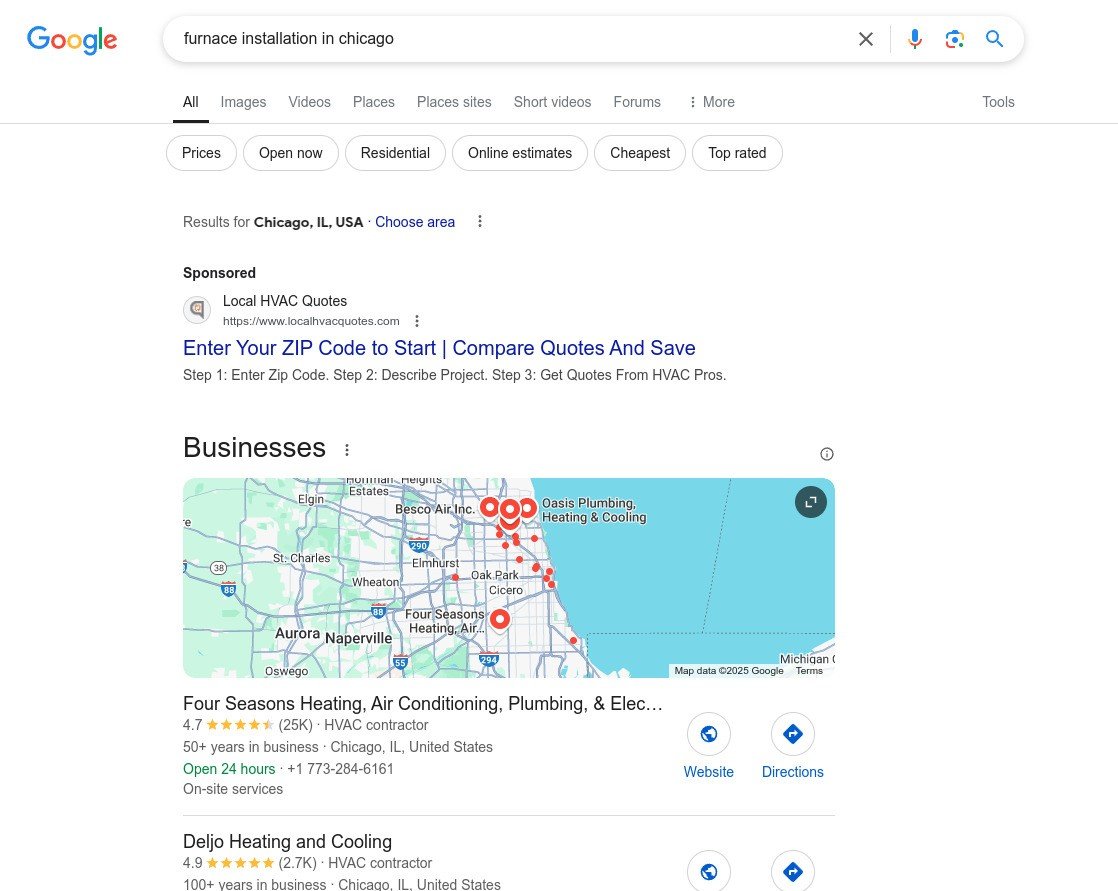
Unlike social media ads that broadcast to a wide and sometimes uninterested audience, Google Ads focuses on intent.
When someone types a query into Google, they are already in a buying mindset. This means that your ad, when optimized correctly, can capture their attention precisely when they’re ready to take action.
To achieve this, you must first understand how to tailor your messaging. It is not just about bidding on generic keywords; it is about creating ad copy that resonates with the immediate needs of your target audience.
When a homeowner sees your ad promising fast and reliable emergency repair services, the chance of conversion increases dramatically. Moreover, localizing your ads can ensure that only those in your service area see your message, reducing wasted impressions and clicks.
Another critical element is the use of ad extensions and callouts. These features allow you to highlight key benefits such as 24/7 availability, certified technicians, or free estimates.
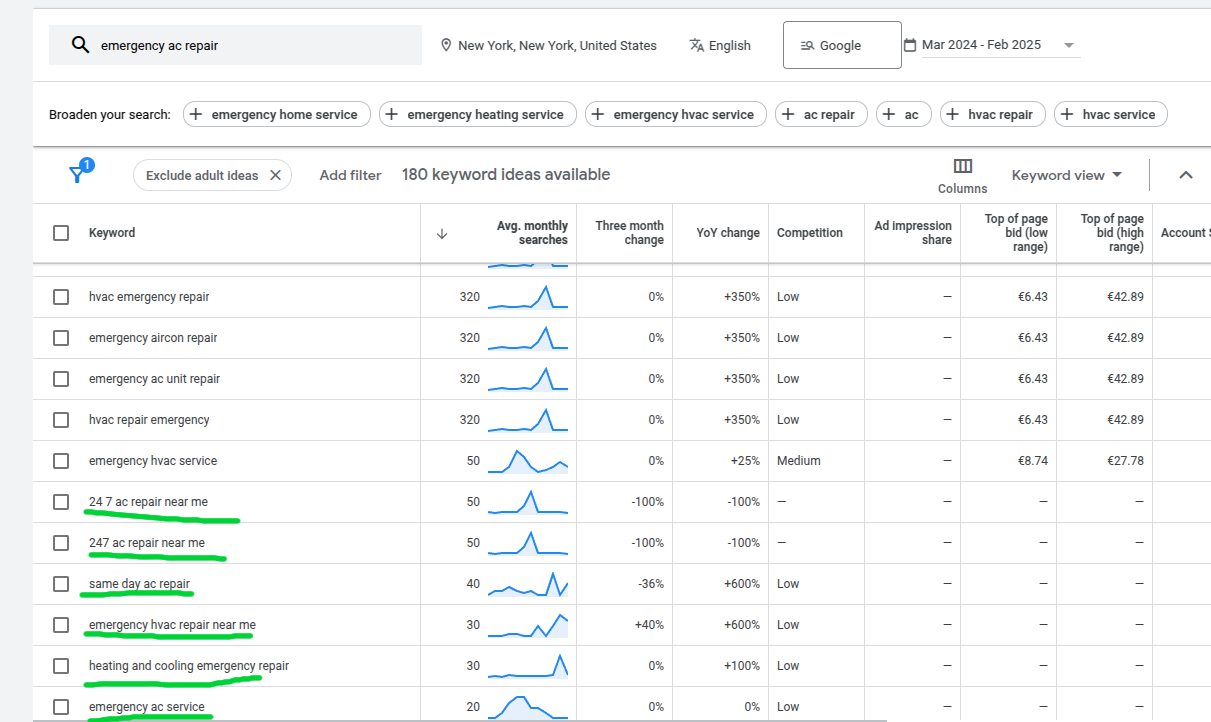
Understanding your competition is also vital. Research what other local HVAC companies are doing with their Google Ads and look for gaps or opportunities to differentiate your business. Perhaps they are not emphasizing fast emergency service, or maybe their pricing isn’t as competitive. Use this information to craft an ad that stands apart in a crowded marketplace.
Ultimately, the goal is to ensure that every dollar you invest in Google Ads is spent reaching individuals who have a genuine need for HVAC services—transforming clicks into high-quality leads and, eventually, loyal customers.
How Google Ads works
Google Ads operates on a simple yet powerful principle: connecting searchers with advertisers through a pay-per-click auction system. When a potential customer types in a query like “emergency ac repair”, Google instantly scans its advertiser database to display the most relevant ads.
The position of your ad is determined by several factors, including:
- Bid amount
- Ad quality
- Relevance to the search term
This means that even if you’re not the highest bidder, a well-crafted ad can still secure a top spot if it closely matches what the searcher is looking for.
At the heart of Google Ads is the concept of intent. Unlike traditional advertising methods that broadcast messages to a broad audience, Google Ads targets users who are already demonstrating interest by actively searching for services.
This intent-driven approach not only increases the likelihood of conversion but also ensures that your marketing budget is spent efficiently. By selecting the right keywords and geographic areas, you can ensure that your ads are served to the most qualified prospects.
Campaign setup is another crucial aspect. Starting with Search Ads is generally recommended for new accounts because they offer predictable performance metrics. Once you have a reliable baseline, you can explore other formats like Local Services Ads and Performance Max campaigns.

Each campaign type offers unique benefits; for example, Local Services Ads are ideal for businesses that rely heavily on local customers, while Performance Max leverages machine learning to optimize ad placements across multiple channels.
In addition to keyword targeting, Google Ads allows for detailed demographic and geographic targeting. This means you can choose to display your ads only to users within a specific radius or even particular neighborhoods.
Such precision ensures that your ad spend is not wasted on audiences that are unlikely to convert. Furthermore, with the use of negative keywords, you can filter out search terms that are irrelevant to your service, further refining your reach and enhancing campaign efficiency.
What to offer to the market initially
When launching a Google Ads campaign, it is crucial to start with a focused approach that allows you to test, learn, and refine your strategy without overspending. Rather than trying to promote every single HVAC service from the get-go, concentrate on a specific offering that resonates strongly with your target audience.
For instance, many HVAC companies find that advertising “emergency ac repair” in a narrowly defined neighborhood is an ideal starting point. This tactic not only minimizes your initial investment but also provides clear data on how well your ad resonates with potential customers.
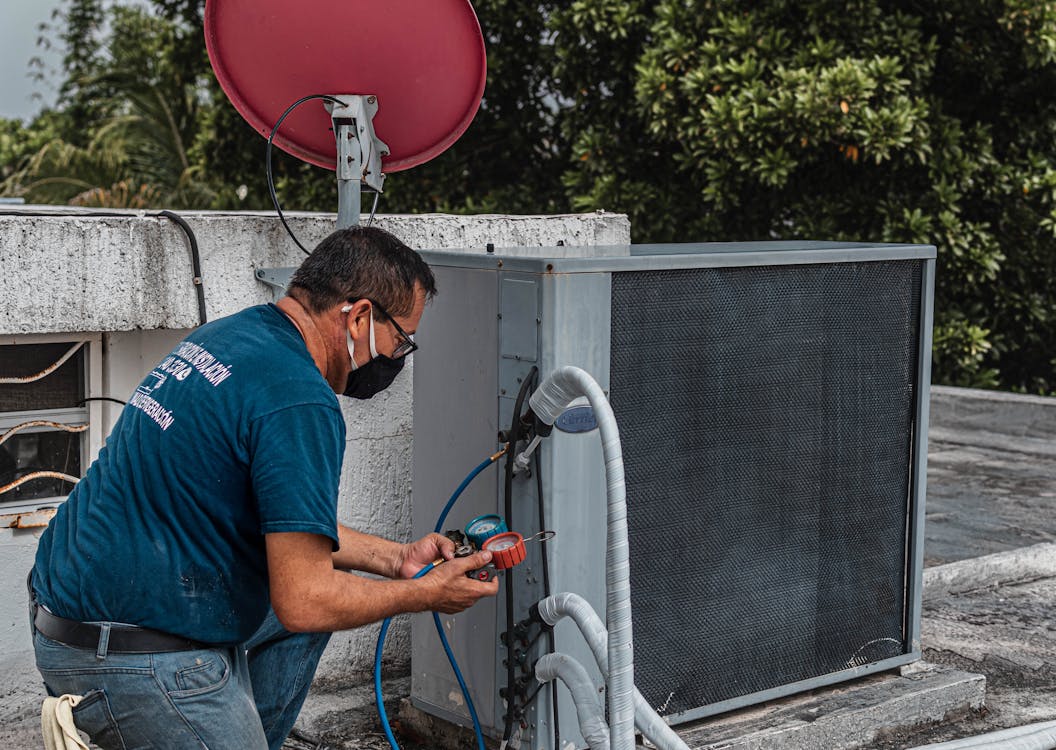
A concentrated campaign offers several benefits. It allows you to isolate variables and determine which ad copy, keywords, and landing pages are most effective. With a smaller scope, you can monitor your campaign’s performance more closely and make rapid adjustments.
It’s important to note that a focused strategy helps build credibility and trust. When potential customers see an ad that speaks directly to their immediate need—such as a quick fix for an overheating AC unit—they’re more likely to click through and engage with your business.
A well-defined offer also simplifies your landing page, making it easier to design a user experience that drives conversions. On your landing page, emphasize key elements such as a clear call-to-action, visible contact information, and testimonials from satisfied customers. These details work together to build confidence and prompt immediate action.
Before scaling your campaign, invest time in thorough keyword research. Concentrate on long-tail keywords that have lower competition but high intent. These keywords might include phrases like “emergency ac repair near me” or “fast furnace repair in [specific neighborhood]”.
Not only do these terms tend to have a lower cost per click, but they also attract highly qualified leads who are ready to engage your services immediately.
Moreover, consider running a small budget pilot campaign. This allows you to test the waters, gather data, and adjust your strategy based on real-world performance.
A pilot campaign can reveal surprising insights about your target audience’s behavior and preferences, which you can then use to fine-tune your full-scale launch. In essence, starting small with a focused, service-specific campaign minimizes risk while providing a solid foundation for future growth.
How to choose keywords for your HVAC company
Keyword selection is the cornerstone of a successful Google Ads campaign, especially in a competitive industry like HVAC.
Too often, Google suggests generic keywords that are either too broad or too expensive, leading to wasted budget and low conversion rates.
To avoid these pitfalls, you must be meticulous in choosing the right keywords. The goal is to pinpoint those search terms that not only attract traffic but also convert into customers.
1. Consider the type of service and location
For HVAC companies, local specificity is key. If your business operates in a large city, begin by targeting hyper-local keywords.
For example, instead of bidding on the broad term “hvac services”, opt for “furnace repair brooklyn” or “ac installation in downtown miami”.
This level of precision helps filter out unqualified clicks and directs your ad spend toward users who are likely to need your services in a specific area.
Localized keywords reduce competition and lower your cost per click while ensuring that your ad reaches the right audience.
2. Prefer keywords with lower costs if possible
Once you have a list of potential keywords, the next step is to analyze their cost-effectiveness.
Use tools like Google’s Keyword Planner to compare the cost per click (CPC) of different search terms. Look for keywords that strike a balance between a reasonable CPC and a high purchase intent.
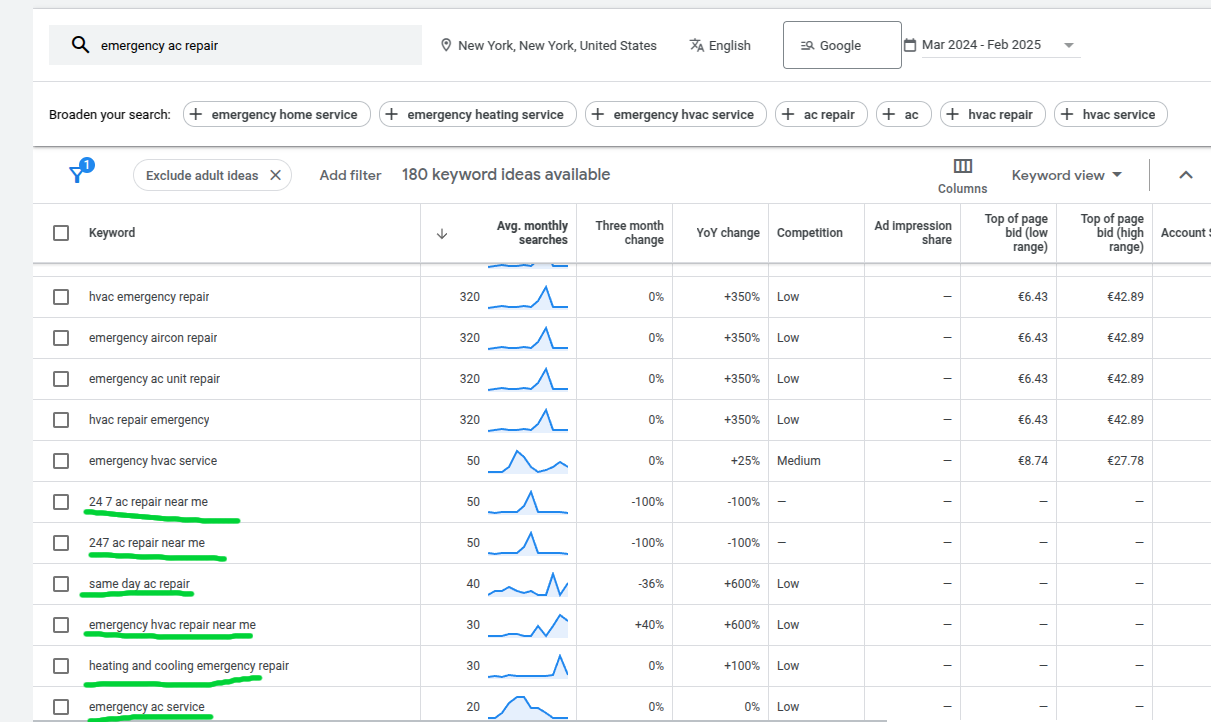
3. Avoid overly generic keywords from the start
Generic keywords like “hvac company” or “air conditioning repair” tend to attract a wide range of searchers, many of whom are not in the market for immediate services.
Starting your campaign with these broad terms can result in a lot of wasted spend and low conversion rates.
Instead, focus on keywords that are specific to your service offerings and location.
Not only do these keywords better match the intent of your searchers, but they also face less competition in the bidding process. Over time, as you gather data and optimize your campaigns, you might consider testing some broader keywords—but only after establishing a solid baseline with your niche terms.
The Google auction system
The auction system in Google Ads is a dynamic, competitive environment that determines both ad placement and cost per click.
Instead of simply awarding the top spot to the highest bidder, Google evaluates a combination of factors such as:
- Bid amount
- Ad quality
- Relevance to the search query
This means that even with a moderate bid, an HVAC business can achieve a top position if it presents a highly relevant and well-crafted ad.
At the core of this system is the quality score, which assesses ad relevance, landing page quality, and historical performance.
A higher quality score can lower your cost per click, making it possible to outperform competitors who might be willing to pay more but have less targeted or engaging content.
In this way, the auction system rewards advertisers who prioritize a strong user experience and accurate, compelling ad copy.
Regular monitoring of auction insights is critical.
By reviewing performance metrics and comparing them with competitors, you can determine if your ad copy or landing page requires improvements.
Small bid adjustments combined with ongoing optimization of ad content and user experience can significantly enhance your overall campaign performance.
Ultimately, success in the auction system is not about outspending competitors, but about outsmarting them. A focus on ad relevance, quality, and continuous optimization can secure high-quality leads without excessive spending.
By leveraging this system intelligently, HVAC businesses can ensure that every click is valuable, driving high conversion rates and maximizing return on investment. This strategic approach allows you to maintain a competitive edge in a crowded market while keeping your advertising costs under control.
The key lies in understanding the interplay of bidding and quality metrics, then refining your strategy based on real-time performance data.
How much to invest? Is $500 per month enough?
Determining the right investment for your HVAC Google Ads campaign depends on multiple factors such as
- Local competition
- Cost-per-click in your area
- Your overall business goals

While a budget of $500 per month might sound appealing for many small businesses, the reality for HVAC companies, especially in competitive markets like the United States, is that this amount is often insufficient.
In highly competitive regions, the daily cost per click can quickly add up, and $500 per month might only scratch the surface of the potential reach.
A more realistic approach is to start with a daily budget that ranges from $50 to $200, depending on your target area and the level of competition. Every situation is unique, so before telling yourself that it might be too much for your business, schedule a free call with me by clicking here to analyse your specific situation together.
This allows you to gather sufficient data to optimize your campaigns effectively. A higher daily budget means that you can bid more competitively on high-intent keywords and capture more qualified leads.
Even in less competitive regions, this level of investment provides room for testing various ad copies, targeting strategies, and landing page optimizations.
Your website does 90% of the job
A professional website or landing page is the cornerstone of any successful digital advertising campaign.
Your online presence is where potential customers form their first impressions about your HVAC business. A well-designed site not only reinforces the credibility of your services but also converts clicks into customers.
In the context of Google Ads, your landing page must be optimized for both speed and user experience, ensuring that visitors find exactly what they need as quickly as possible.
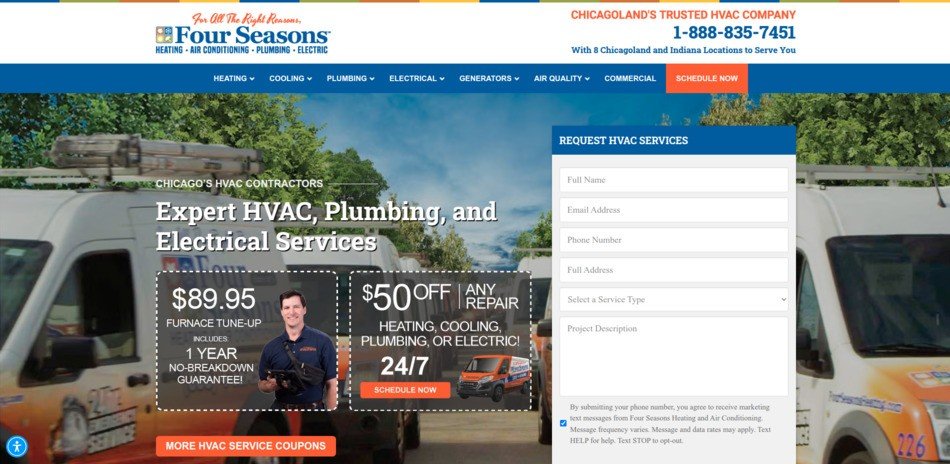
Screenshot from Four Seasons Heating, Air Conditioning, Plumbing, Electric.
The first element to consider is clear, concise messaging. Your landing page should immediately communicate the unique benefits of your service, such as prompt emergency repairs, certified technicians, or competitive pricing.
It is essential to display your phone number prominently and include a strong call-to-action that encourages visitors to take the next step—whether it is calling for an estimate or filling out an online form.
Additionally, integrating customer testimonials and reviews can further build trust and prompt conversions.
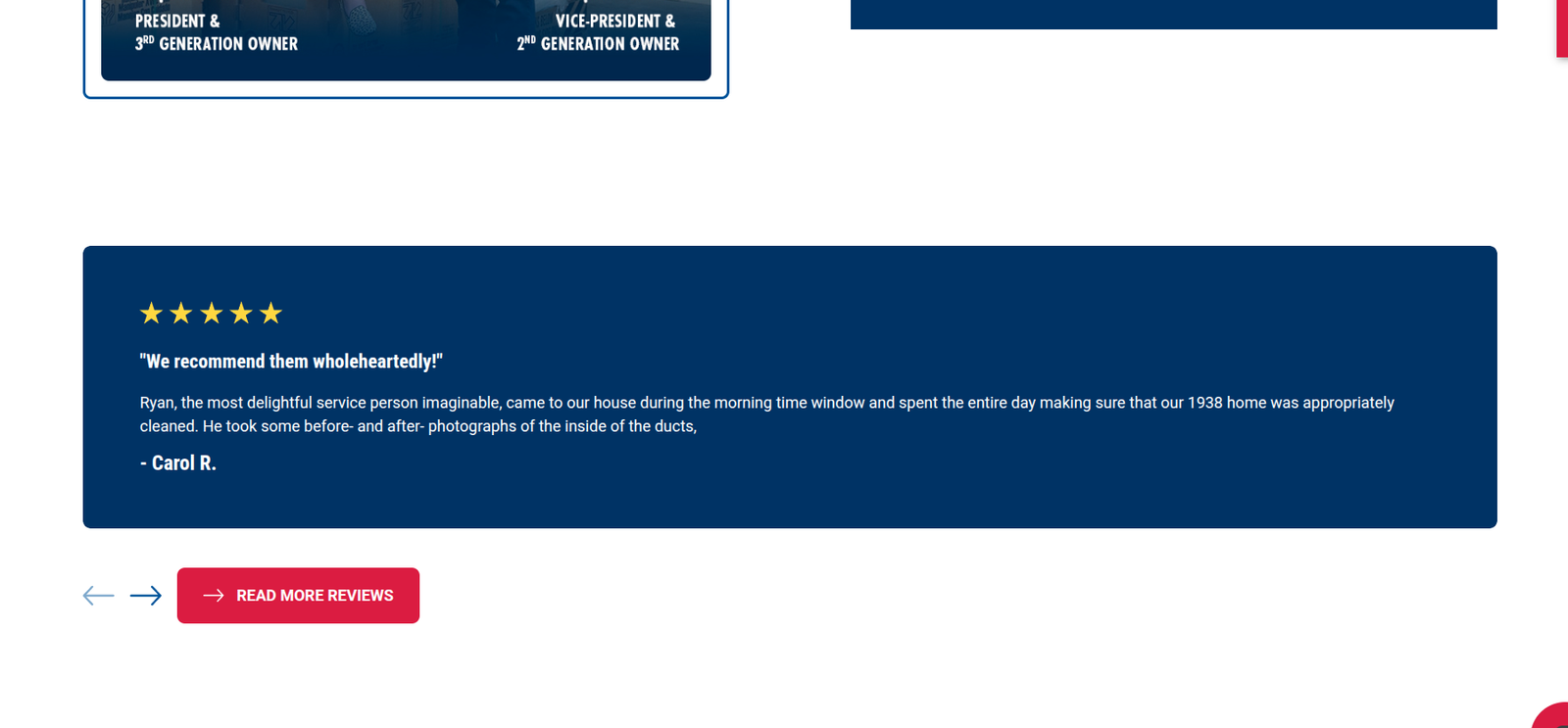
Screenshot from Standard Heating and Air Conditioning
Navigation and design play a significant role in user retention. A cluttered or confusing website will only drive potential leads away. Instead, opt for a clean layout that guides users smoothly through the information.
Consider incorporating visual elements like high-quality images and icons to highlight key services and special offers. A simple, intuitive design improves user experience, which in turn lowers your bounce rate and increases the likelihood of conversion.
An appointment schedule calendar can also be effective for those who prefer self-service rather than making a phone call. There are plenty of tools that make processes automated and easy to manage.
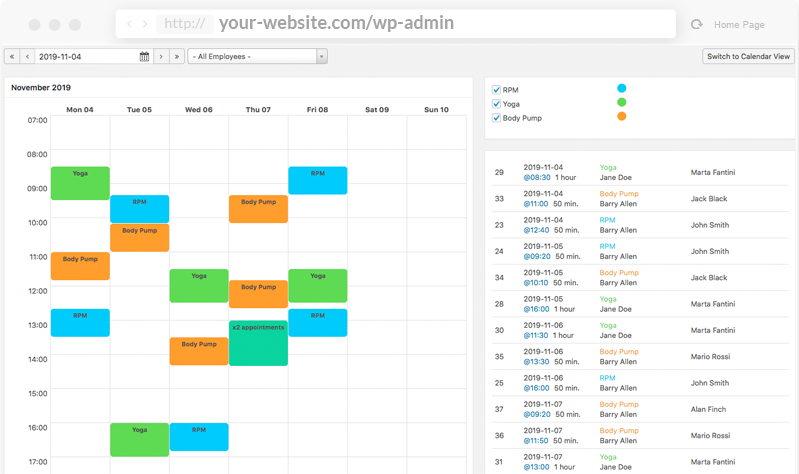
SEO is another critical factor. Although Google Ads drives paid traffic, organic search traffic can complement your paid campaigns by providing long-term visibility. Regularly update your website with fresh, relevant content, and ensure that your site is fully optimized for mobile devices.
A responsive design that adapts to various screen sizes not only improves user engagement but also contributes positively to your search engine ranking.
Finally, the success of your Google Ads campaign is closely linked to the quality of your landing page. It’s important to remember that technical setup and management of a campaign represent only about 10% of your overall success.
The remaining 90% lies in having a comprehensive strategy that ties together your ad messaging, landing page design, and follow-up processes. By investing in a professional, conversion-optimized website, you set the stage for sustained success and maximize your return on investment from every click.
That's why we offer more comprehensive services that do not only include the campaign management. Our role is to convert visitors into customers and not only drive valuable traffic to your website like other web agencies do.
Need help with your ads? Click here and contact us to analyse your situation for free!
Conclusions
In summary, advertising your HVAC business on Google Ads demands a strategic approach focused on intent, localization, and continuous optimization. By targeting specific, high-intent keywords and investing in a professional online presence, you can overcome the challenges of rising ad costs and fierce competition.
Remember: starting with a focused campaign and gradually expanding based on data-driven insights is the key to long-term success. Now is the time to refine your strategy and turn every click into a potential customer.

